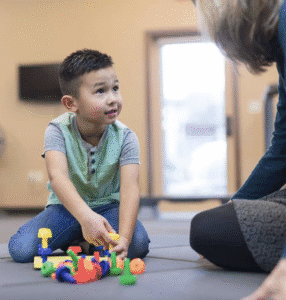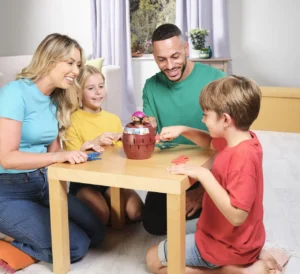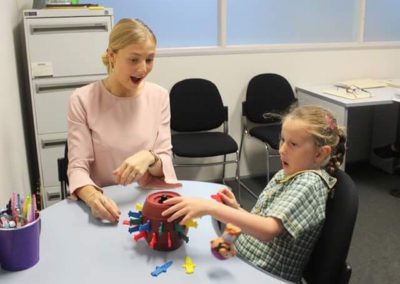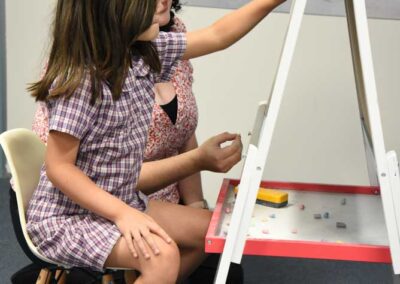If you’ve ever peeked into your child’s speech therapy session and wondered, “Why are they just playing?” you’re not alone. It’s a question speech pathologists often hear from parents, especially when therapy doesn’t look like “work” in the traditional sense. But here’s the secret: play is the work of childhood, and it’s one of the most powerful ways to build communication skills.
The Science Behind Play

Children learn best when they’re engaged, motivated, and emotionally connected to what they’re doing. Play provides exactly that. It creates meaningful, real-life moments for children to practise the skills they’re learning whether that’s using new sounds, building sentences, or learning how to take turns in conversation.
When children are relaxed and having fun, their brains are more open to learning. Play also gives the speech pathologist valuable insight into how your child communicates naturally, what excites them, how they problem-solve, and what supports help them succeed.
What “Play” Looks Like in Therapy
Speech therapy play sessions are carefully planned and purposeful. Each toy, game, or activity is chosen to target specific speech or language goals. Here are a few examples:
1. Building early words through play with favourite toys
If your child is learning to say their first words, we might use a farm set, cars, or bubbles. While it looks like simple fun, we’re modelling key words like “go”, “more”, “pop”, and “open”, encouraging your child to imitate or gesture along with us. These early interactions lay the groundwork for longer phrases later on.
2. Working on speech sounds during games
If a child is practising a sound like /s/ or /r/, we might play a turn-taking game such as Pop Up Pirate or Bowling. Each turn gives them a chance to say their target word (“snake”, “sock”, “sun”) in a natural, motivating way. The focus isn’t on drilling; it’s on having repeated opportunities within a fun routine.

3. Building sentences and grammar through pretend play
Using a toy kitchen, dolls, or a pretend shop, we model full sentences like “She’s cooking pasta” or “I’m buying an apple”. The child is encouraged to use these sentence forms in context, which helps grammar and vocabulary develop in a meaningful way, not through worksheets but through real interaction.
4. Developing social communication through board games
For older children, games like Guess Who? or Uno are perfect for practising taking turns, making comments, negotiating rules, and managing emotions during play. These are all key parts of social communication that transfer directly into playground and classroom settings.
5. Using movement play for attention and engagement
Many children learn best when they’re moving. Activities like obstacle courses, treasure hunts, or ball games can be used to build following directions, sequencing, and descriptive language. For example, we might say, “First crawl under, then throw the ball into the bucket,” or “Find something that’s round and blue.

Why It Works
Play makes communication practice meaningful. Rather than focusing on repetition for the sake of it, we embed goals into activities your child genuinely enjoys. This helps them see communication as powerful, something that gets their needs met, helps them connect with others, and brings joy.
It also ensures that what they learn in therapy carries over into daily life. When families use the same play-based strategies at home, children get even more opportunities to practise language in natural settings.
How You Can Support Play at Home
You don’t need special toys or hours of free time. Here are a few simple ways to build communication through play at home:
- Follow your child’s lead. Join in with what they’re already interested in and comment on what they’re doing.
- Model language, don’t quiz. Instead of asking lots of questions, describe what’s happening: “You’re building a big tower!”
- Use repetition and routines. Repeat key words and phrases naturally during play; that’s how children learn them.
- Pause and wait. Give your child time to respond, gesture, or take their turn in conversation.
- Keep it fun. The goal is connection and enjoyment, not perfection.
The Takeaway
When you see your child laughing, pretending, or playing in therapy, you’re watching meaningful communication learning in action. Play creates the foundation for talking, listening, and social connection, the skills that help your child thrive at home, at school, and beyond. Through play, your child is learning to communicate with confidence!









